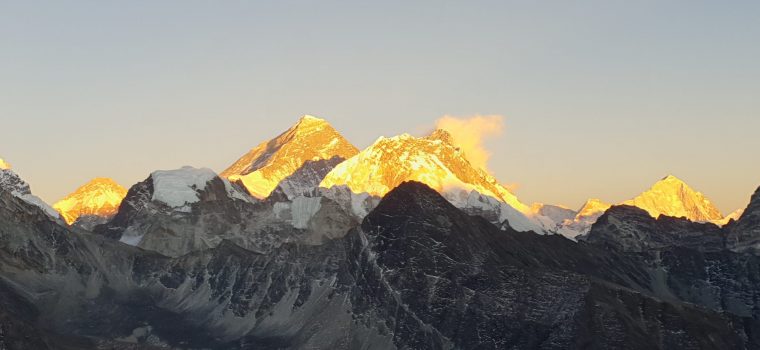
Everest Base Camp Trekking in Nepal is the epitome of all trekking adventures across the globe. The trail reaches as high as 5545 m. Therefore, it is not an ordinary task to complete. This blogger is sure that whoever loves to challenge them against the adversity would have Everest Base Camp Trek as one of their bucket list items to do before dying. The trail is full of adversity yet has a unique feature. Once you have completed the trip, the confidence mounts high over than the 8848 m height. Overcoming the adversity and living is probably the most underrated notion to live life happily. Therefore, this blogger would like to share the difficulties that one can face while trekking in the Everest region of Nepal in a very subtle way.
The blogger chose to express the difficulties of Everest Base Camp Trek in a subtle way because the task itself is an arduous task. If we travel thinking it as an arduous one then we couldn’t conquer it. One famous philosopher once said that war can’t be won by physical strength rather war can be won by psychological strength. There are couples of things to consider regarding the physical aspects but other than those few things the most important thing that one should have for successful Everest Base Camp Trek is the mental health.
Three of the things make the Everest Base Camp Trek challenging if not difficult are Altitude Sickness Risk, Rugged Terrain and Unstable Climate.
If you have a very healthy body and do regular light exercises with the sound diet then EBC trek is just a piece of cake. However, without exasperating and coming to reality, the blogger would like to stress that the risk of thin air and altitude sickness should be considered. Acclimatization and ways to avoid the altitude hazards should be the number one priority while trekking in the Everest region of Nepal.
Most of the seasoned mountain guides and also the locals too get caught by the altitude sickness. This is probably the most treacherous thing in the Everest region. It makes the trail as challenging with the slight upgrade from being moderate. However, it can be completely removed from the line if we give detail attention towards itinerary, food pattern and drinking pattern. Moreover, most of the altitude sickness happens due to carelessness.
Hurried ascent also leads to sickness. Usually, travellers start their journey from Kathmandu (1300 m) and directly land in Lukla (2800 m). In course of 5-6 days’ time, trekkers reach 5545 m with an average climb of over 600 m a day. Therefore, without precautionary measures, altitude sickness can’t be avoided. As the altitude increases the air becomes lesser eventually it becomes hard for trekkers to breathe. The vegetation is scarce in high altitude. Some trekkers take alcoholic drinks to keep themselves warm but that might lead to dehydration. As dehydration is the biggest reason of getting altitude sickness.
The blogger highly recommends to all travellers that they must heed the instructions of the guide and take lots of water. The gradual and uniform pace as well as good food – drink pattern helps to avoid such altitude sickness.
Everest Base Camp Trek is full of rugged terrain. You will start the trek of Everest Base Camp on the bank of Dudhkoshi River and reach to no vegetation zone. The green lush forests of temperate style are on the initial phase of the trail followed by sub-alpine, alpine and zero vegetation. The trail has well trekked hence the way is visible. However, the uphill and downhill, as well as the change in the air density, make it arduous. The trail from Dingboche up to Everest Base Camp via Thukla, Lobuche and Gorakshep are through or beside moraines and glacier. Therefore, it makes trekkers fatigued easily. If you are a regular walker and do light exercise then it would not be any problem to walk on the trail. The blogger would like to recommend that you should direct your guide to pace gradually and slowly as well as have enough acclimatization rest days.
One of the reasons why Everest Base Camp Trek is very precarious in nature is the climate. You can’t predict the weather in the Khumbu region of Nepal. Within a minute the visibility might be very low. If you are familiar with the drastic change in the climatic conditions then it might be harder for you to adapt. As mentioned earlier having strong mental health can overcome any hurdles.
Besides these difficulties some random events might act as a hurdle for any kinds of the trip if you don’t plan properly. Therefore, this blogger doesn’t believe in the statement that “Everest Base Camp Trek is difficult”. In addition, the blogger also suggests that don’t overestimate or underestimate while trekking in Khumbu. After all, Everest Base Camp Trekking in Nepal is an epitome of mountain wilderness. You should keep in mind that reaching the foothill of the world’s tallest mountain Mt. Everest is not an ordinary task.